Rouvas gorge hiking: A very challenging 7 hour hike, available from April to November. This stretch starts lake Votomos and ends in Rouvas forest. Not suited for children. This gorge is also known as the Saint Nicholas Canyon. At the beginning of the walk you come across a lake, which is a fresh water lake, very rare on Crete. A little bit further you see the first object; the monastery of Agios Nikolaos. There is a lot to be seen along the way; you cross bridges for example and you will see a waterfall.
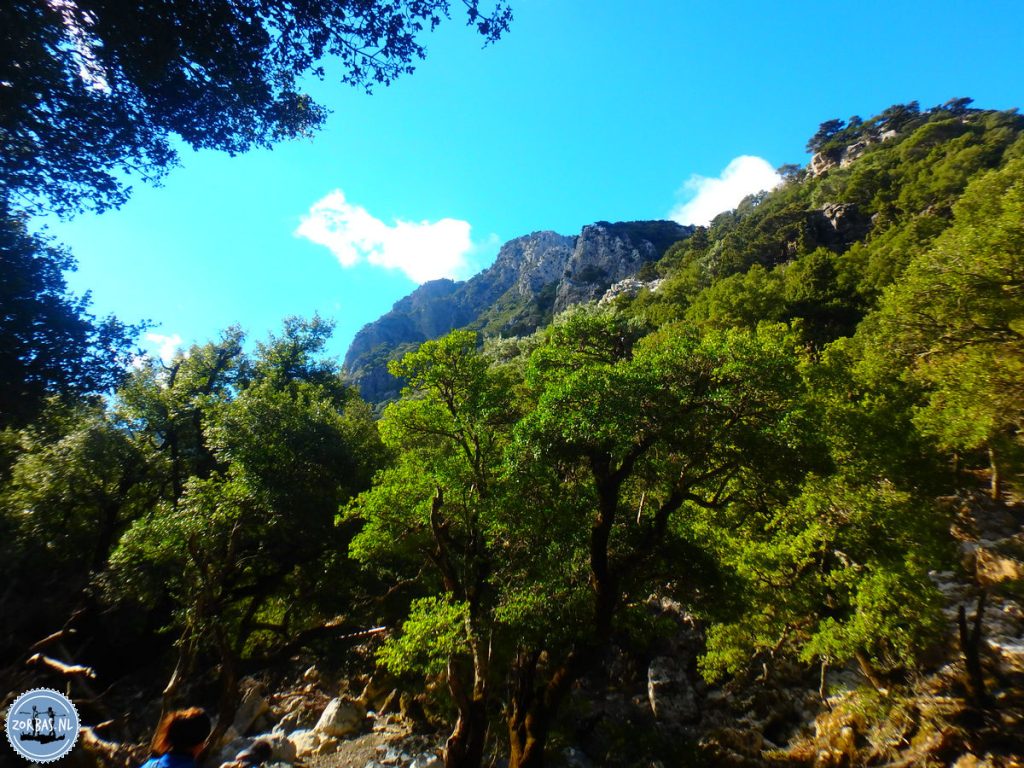
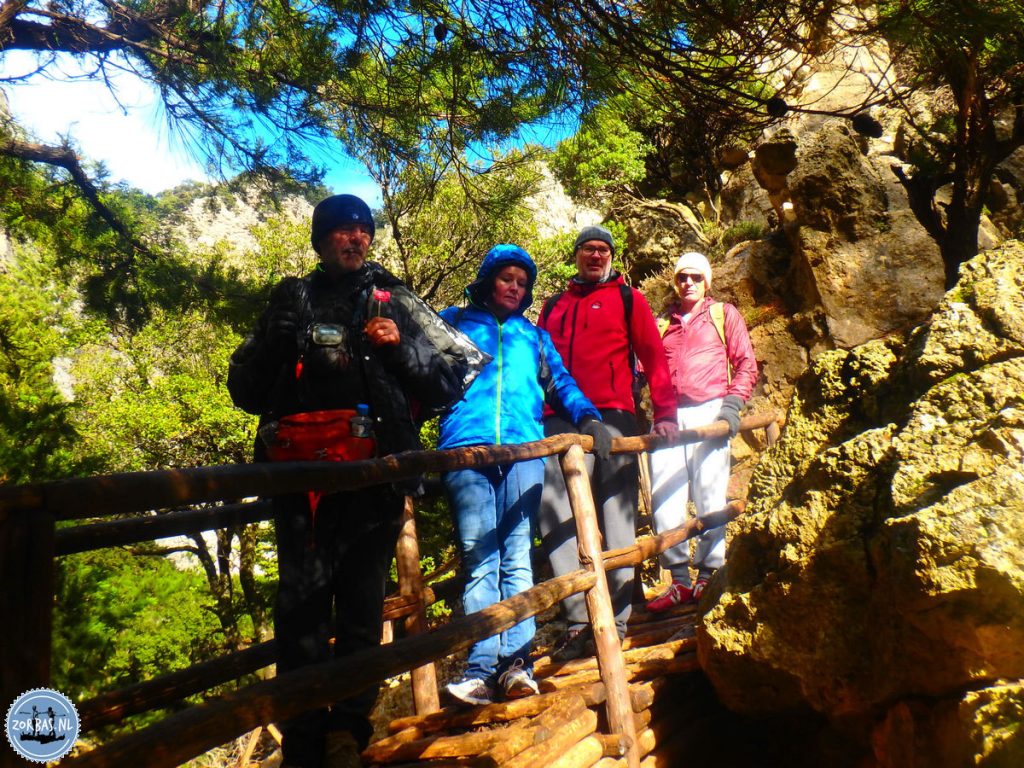
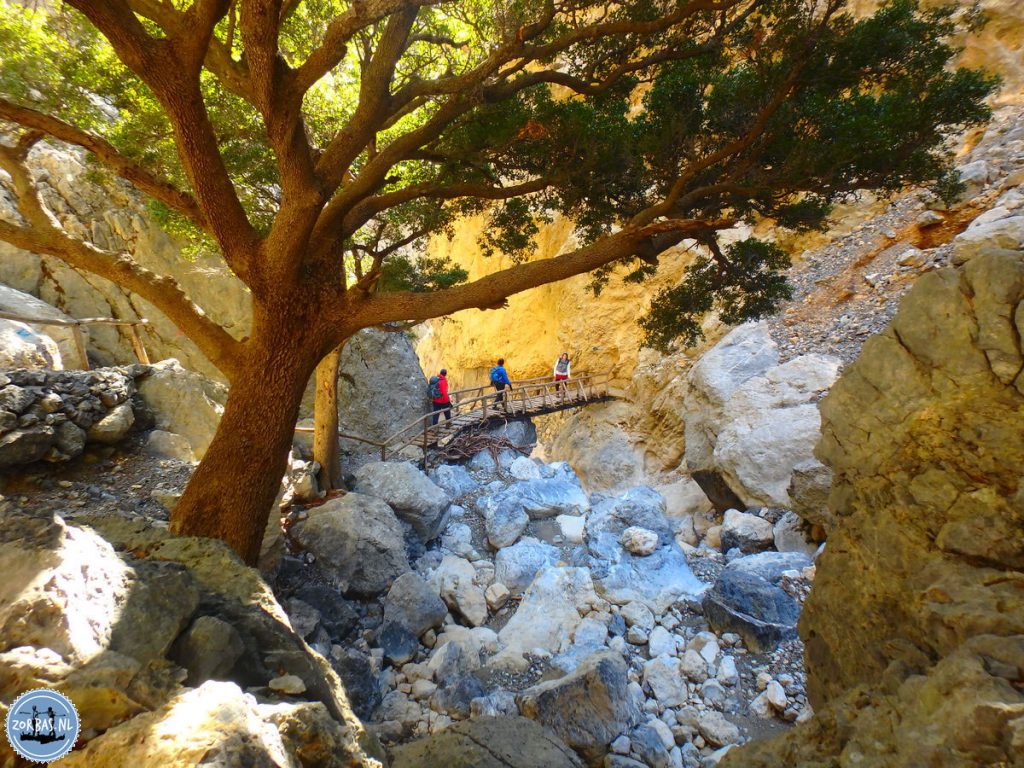

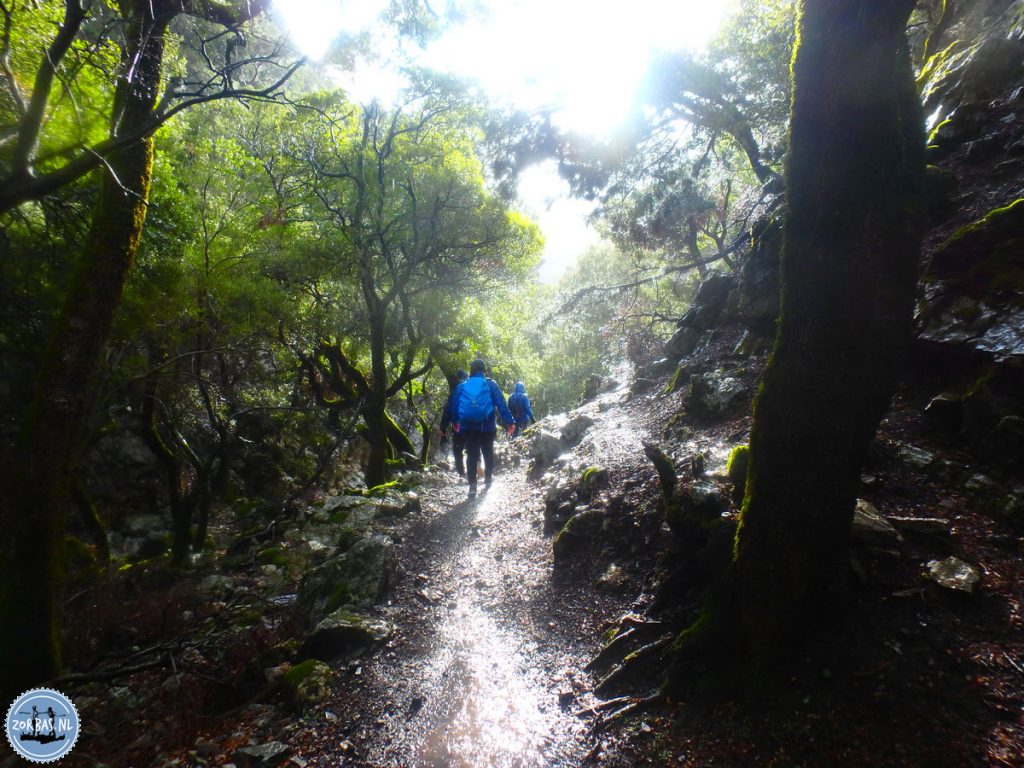
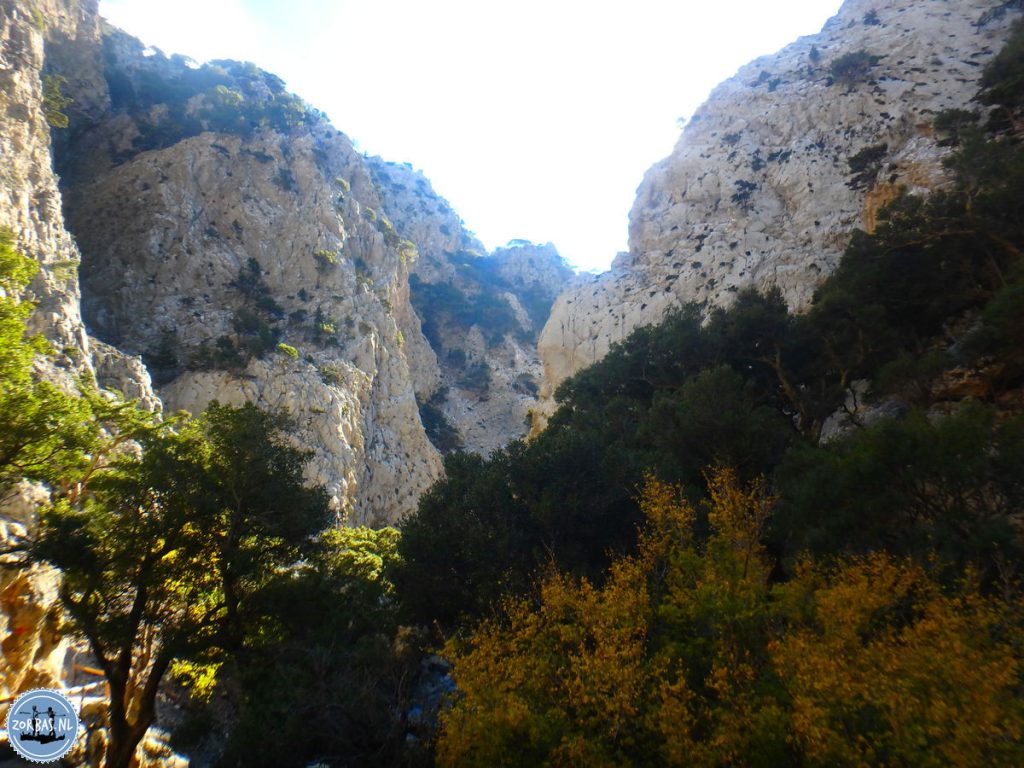
Sometimes people ask us if we organize also a nice walk in a forest. A forest on Crete though is nowadays a rare phenomenon. High on the slopes of the Psiloritis or Idi mountain, on the southeast side of the Lefka Ori, is the Rouvas gorge. Here is one of the most beautiful forests of Crete, the oak forest of Rouvas. The Psiloritis mountain is also called Idi, because in the ancient Greek language this means “wooded mountain”. In the Minoan time this mountain was all covered by forest. The Psiloritis is with 2456 meters the highest mountain of Crete.
The start of the hike – Zaros
The most famous place where the Rouvas gorge starts, is Zaros. Rouvas and Zaros are well known on Crete, because of the many springs with delicious drinking water from the mountains. In both villages water is bottled, which you can buy in every supermarket on Crete. Zaros is also famous for its trout farms and the freshwater lake Votomos at an altitude of 400 meters.
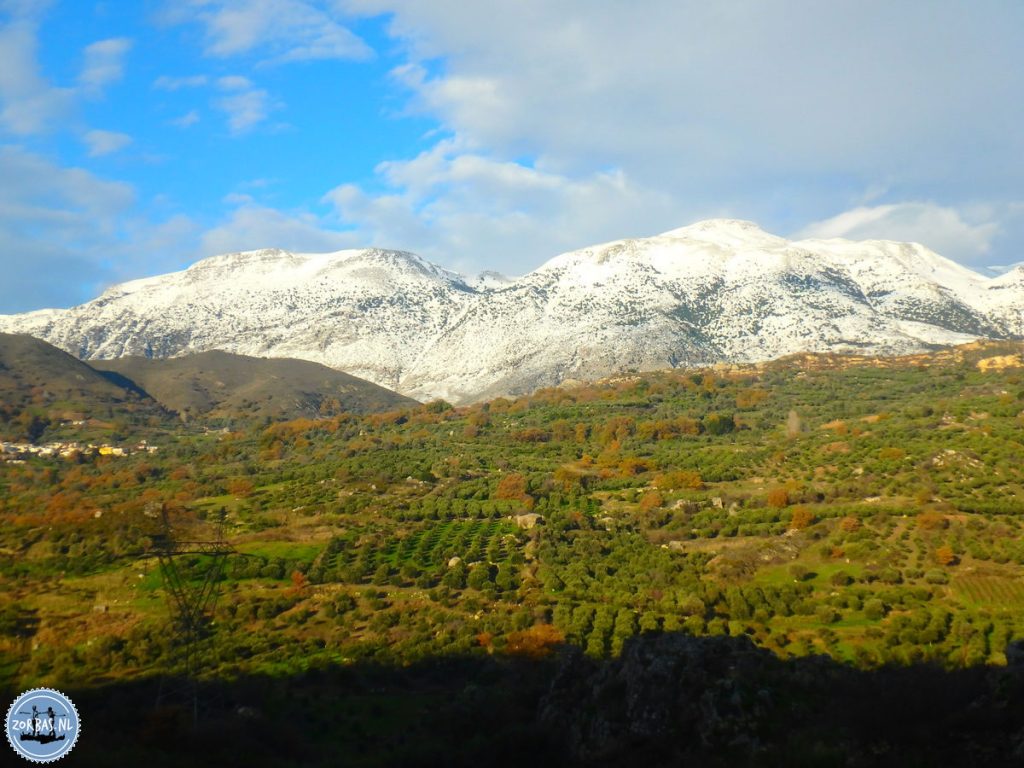


The walking trail starts at the lake and goes towards the little church Agios Nikolaos, where you are in less than half an hour. This little old church is close to a larger monastery. This monastery has been built in a “modern” style. The old church still has the original frescos from the 14th century. Shortly after the church you arrive at the gorge. The path goes both upwards and downwards, sometimes along running water if you are here in winter or spring. The winding path leads to Agios Ioannis. Along the way there are resting points with wooden benches.
It all sounds a lot easier than it really is, since nature provides the necessary obstacles and there are many loose stones on the trail. If there is water flowing in the river, the trick is to keep your feet dry. The water though adds some extra beauty to nature. To get to Agios Ioannis, there is a pretty tough climb, which is even more difficult if you do not have a head for heights. There is a wooden railing, but it is not everywhere reliable. With each step up, the view of the surrounding gets more impressive.


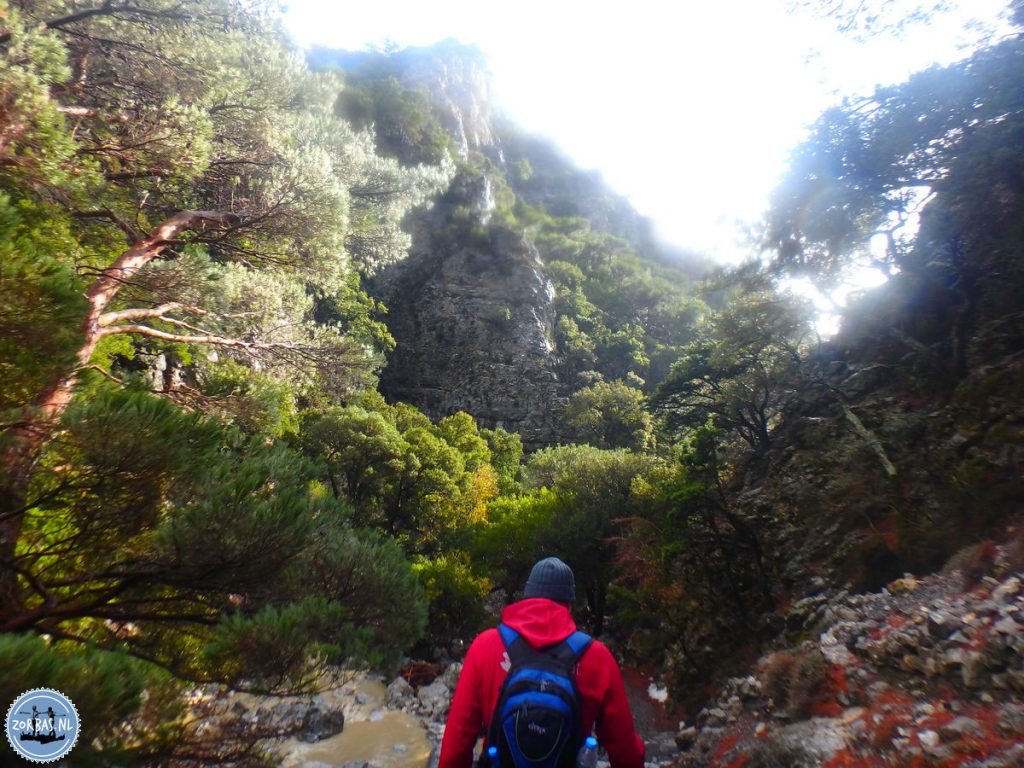
The forest of Rouvas
After hiking through the gorge, the nature changes. Now you see green bushes and trees. In the forest you have amazing views over the mountains. The forest has a great ecological value and is situated at an altitude of 1100 meters. Several native species of flora and fauna live here, such as the Cretan kefalanthiro (indigenous orchid) and the Cretan fourogato (wild cat). These cats are huge, but they are afraid of people, so the chance you will see them is extremely small. In the forest are trees you find only on Crete, especially the Quercus Coccifera (kermes oak) has adapted fully to the environment. Furthermore, you also see here the maple, cypress, pine tree and plane tree. At the end of this path, you continue towards the right in the direction of Agios Ioannis.
The plateau of Rouvas – Gergeri – Agios Ioannis
This small plateau is usually called Agios Ioannis, to the little chapel which is there. It is the heart of the forest. There are gigantic trees and many of them are at around thousand years old. Some trees are hollow and fit up to three persons inside. There is a mountain hut with a barbecue and water where you can stay overnight. Unfortunately the mountain hut can be dirty, because some people leave rubbish behind. On the other side of the plateau is a “mitato”, an old shepherd’s hut.

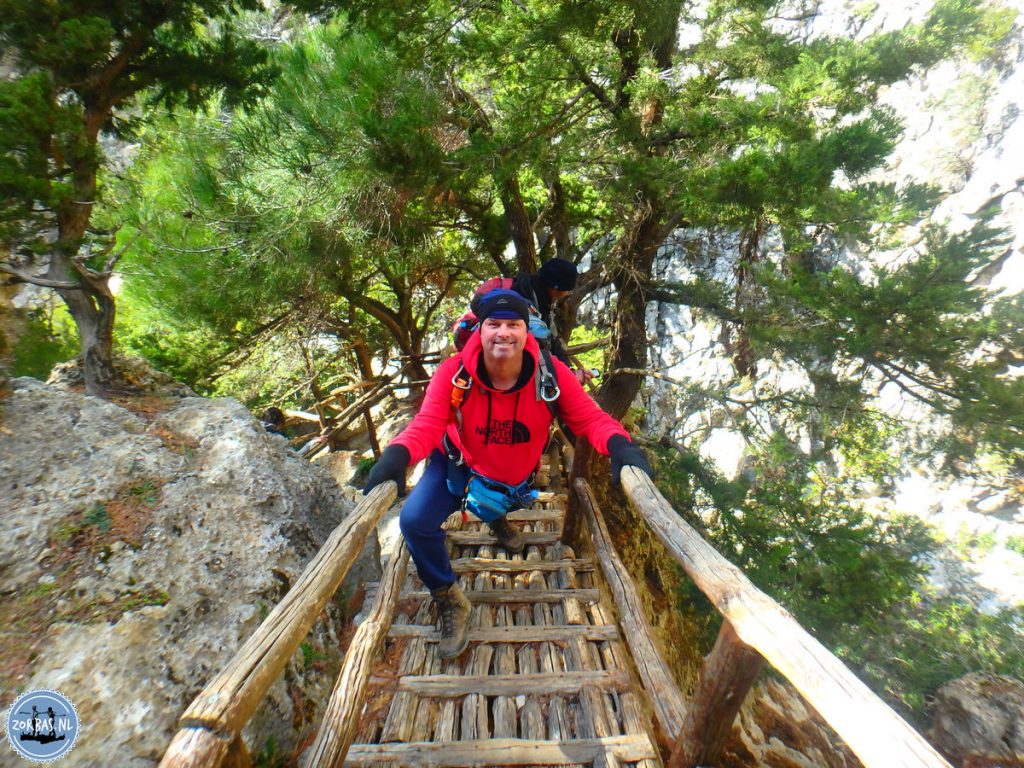

From the plateau you can continue in multiple directions: through the forest back to the starting point, continue to the large Nida plateau and Psiloritis, or go to Gergeri. You can also take the other path to return to the gorge of Rouvas. You then follow the same route back to the lake Votomos at Zaros. This is not boring at all, since the hike gives this way completely different views from when you went up.
Votomos lake Zaros
The name Zaros reveals the abundance of water in the area, because it comes from the combination of the Greek word “za” and the verb “reei”, meaning “much flow”. The Votomos lake is a freshwater lake, which was constructed in 1987 at the spring of Votomos. The freshwater lake is used for the farming of trout. It is a lovely place for a picnic! During the summer months it gets busy here, especially the weekends.
Mitato: A mitato is an old shepherd’s hut, built of stone without cement in between. Especially in the mountains of western Crete you still encounter many of these huts. The name comes from the Latin metatum, which means military camp. In the Byzantine period the name was used in order to indicate a shelter. The mitato on Crete is even today used by the shepherds as a shelter and to stay overnight.


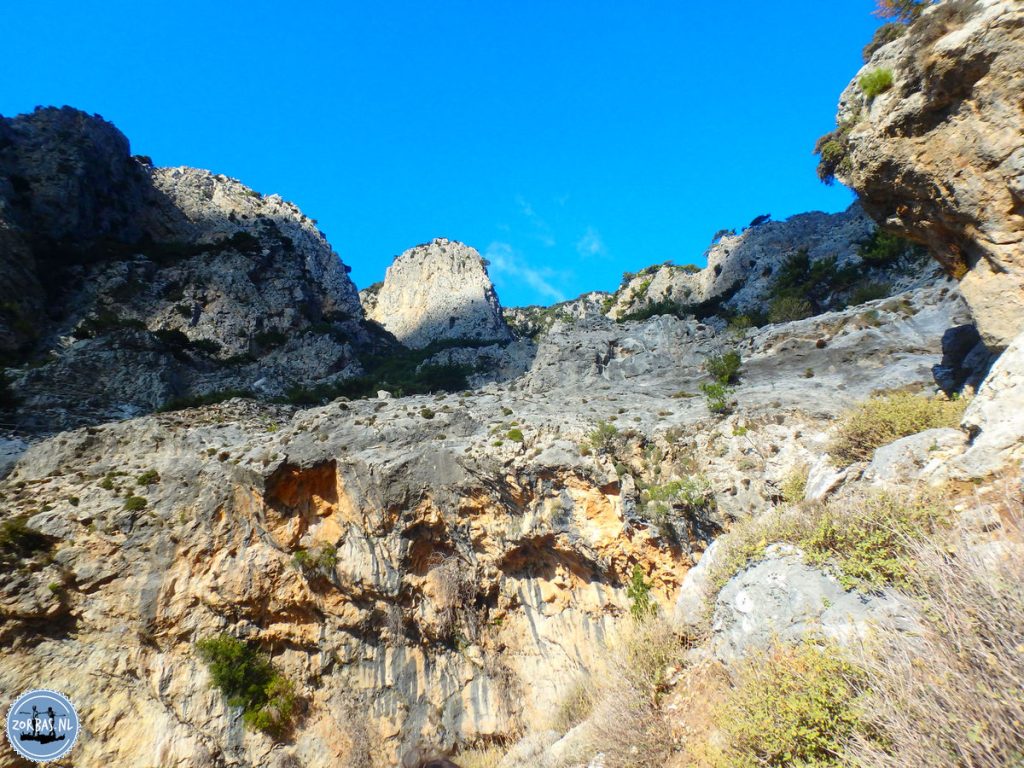
More information
Level: quite heavy, you should take into account a lot of climbing and descending over loose stones. To do this hike, you really need a head for heights!
Distance: 12-17 kilometres or 22 kilometres.
Altitude: at least 600 meters.
Requirement: sturdy mountain boots with a good grip, backpack with water and a snack.
Holidays on Crete: Apartment rental and accommodation on Crete. This is the right address for family apartments and holiday homes, excursions and cheap flights to Crete. There is a detailed overview of the latest holiday news from Crete including many pictures also about walking on Crete. Crete is the most southern holiday island of Europe.
In case you like more information, please send an email to zorbasisland@gmail.com
